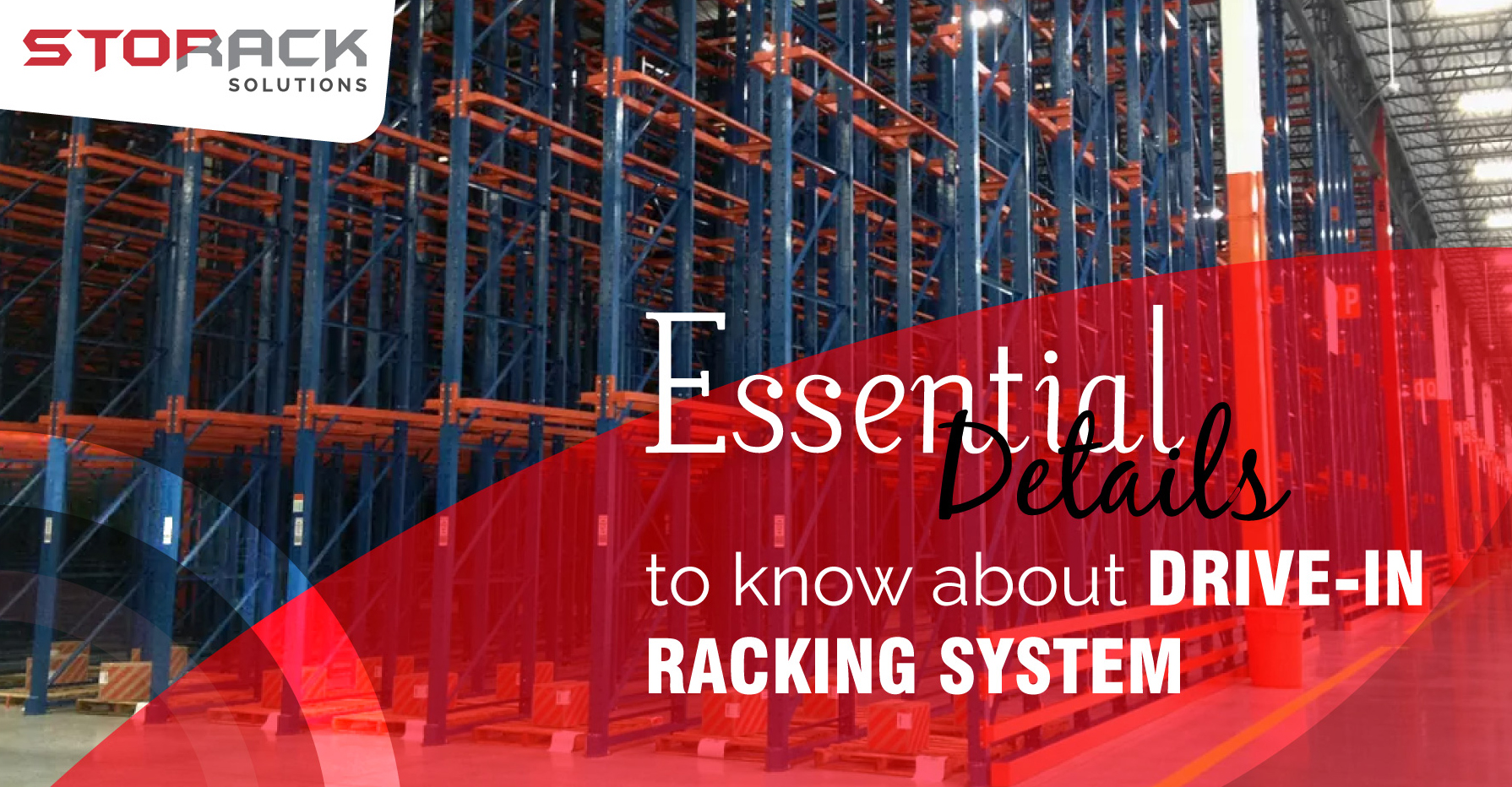
Essential Details To Know About Drive-in Racking System
In today's fast-paced industrial manufacturing and warehousing world, efficient and organized storage solutions are critical to optimizing operations and maximizing productivity. One such popular storage solution is the drive-in racking system. Drive-in racking systems are designed to provide high-density storage, allowing businesses to store many pallets in a limited space.
What is a Drive-In Racking System?
A drive-in racking system is a high-density pallet storage system that allows forklifts to enter the racking structure and drive directly into the racks to access pallets. The system is typically composed of upright frames, horizontal load beams, and guide rails that facilitate the movement of forklifts. Pallets are loaded and unloaded from the duplicate entry and exit point, creating a "drive-in" concept. a
Features of Drive-In Racking Systems
- High-Density Storage:By eliminating aisles, drive-in racking systems can achieve up to 85% storage densities compared to traditional selective racking systems.
- Last-In, First-Out (LIFO) Storage: Drive-in racking systems operate on a last-in, first-out (LIFO) storage principle, meaning that the last pallet loaded into the system is the first one to be retrieved.
- Durable and Reliable: They are typically made from high-quality steel and are engineered to provide durability and reliability, ensuring the safe and efficient storage of palletized goods.
- Customizable: Load beams can be adjusted to accommodate varying pallet heights, and the number of guide rails can be customized to match the system's depth.
Benefits of Drive-In Racking Systems
- Cost-Effective: Drive-in racking systems can be a cost-effective storage solution for businesses that need to store large quantities of homogeneous products. They require fewer aisles compared to selective racking systems, which means less material and labour costs associated with constructing and maintaining aisles.
- Increased Storage Capacity: With the ability to stack pallets deep within the racks, drive-in racking systems can significantly increase the storage capacity of a warehouse. It is especially beneficial for businesses with limited space but must store a large inventory volume
- Improved Inventory Management: With the LIFO storage principle, businesses can easily monitor stock rotation and manage inventory levels more effectively.
- Enhanced Warehouse Efficiency: Forklifts can drive directly into the racks to retrieve pallets, eliminating the need for extensive travel within the warehouse. It can result in faster retrieval times and increased productivity.
Considerations for Implementing Drive-In Racking Systems
Before implementing a drive-in racking system in a warehouse, businesses should carefully consider several factors to ensure its success.
- Product Characteristics:Drive-in racking systems suit homogeneous products with low stock rotation. Businesses should consider the characteristics of their products, such as size, weight, and storage requirements, to determine if drive-in racking is the most suitable storage solution.
- Warehouse Layout: The warehouse layout plays a crucial role in the effectiveness of a drive-in racking system. The dimensions of the warehouse, the precise height, and the available floor space should be considered when determining the feasibility of implementing a drive-in racking system.
- Inventory Management Requirements: Businesses should assess inventory management requirements, such as stock rotation, access frequency, and order picking processes, to determine if a drive-in racking system aligns with their operational needs. Other storage solutions may be more suitable if frequent access to different SKUs or stock rotation is critical.
- Forklift and Operator Training: Proper training and certification of forklift operators are crucial to ensure the safe and efficient operation of the system.
- Maintenance and Inspection: Businesses should plan for ongoing maintenance and inspection schedules to keep the system in optimal condition and proactively address potential issues.
- Safety Measures: Safety should be a top priority in any warehouse operation. Drive-in racking systems have inherent risks, such as forklift impacts and limited visibility for operators. Implementing safety measures such as guide rails, safety bars, and floor markings can minimize risks and ensure the safe operation of the system.
Drive-in racking systems are a popular choice for businesses that require high-density storage of homogeneous products with low stock rotation. Businesses should carefully consider their product characteristics, warehouse layout, inventory management requirements, forklift and operator training, maintenance, and safety measures before implementing a drive-in racking system in their warehouse operation.